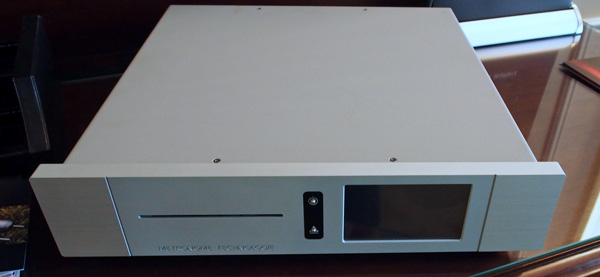

Metrognome stereo plus#
The OPA604 is an extremely high-quality op-amp with low distortion (0.0003%), very low noise (10nV/Hz) and a high slew rate (25V/µs) plus a gain bandwidth of 20MHz that’s notable not only for being able to natively drive 600Ω loads, but also for its outstandingly good sound quality. The solid-state output of the Metronome AQWO uses four Texas Instruments OPA604 FET-input operational amplifiers in Class-A configuration. Adding this option also adds a couple of thousand to the recommended selling price. The valves are triodes, and they’re transformer-coupled. The AQWO comes standard with a solid-state output stage, however you can optionally choose one that has a second output stage, using valves, which then allows you to switch between the two output topologies. Obviously, the type of filter you choose will affect the sound quality of the AQWO, but there’s another option you can choose that will affect sound quality even more.

In practise, our experience is that many owners of DACs which offer multiple filters use different filters depending on what type of music they’re listening to at the time – one filter type for classical music, another filter type for rock music, and maybe another for jazz, and so on.

Of course if you don’t like the sound of one filter, you can easily switch to another. Metronome has generously allowed its customers to choose between six options: Sharp Roll-Off, Slow Roll-Off, Super-Slow Roll-Off, Short Delay Sharp Roll-Off, Short Delay Slow Roll-Off and Low Dispersion Short Delay.
Metrognome stereo full#
Others offer maybe a choice of two (usually ‘fast’ and ‘slow’) only… and not the full set. Quite a few manufacturers select just one filter and do not offer their customers any choice at all, despite these options being available on the DAC.

Unfortunately, the new flagship DAC cannot be retrofitted to the AQWO, as it’s a 128-pin device, whereas the AK4497 is a 64-pinner.Īs with many high-end DACs, the design of the AK4497 allows manufacturers to choose to use one of several different filters, or to permit their customers to choose between them. At the time Metronome was developing the AQWO, the AK4497 was the flagship DAC in Asahi Kasei’s line-up… and it remained so until late 2019, when Asahi Kasei launched its Verita AK4499. The Metronome AQWO uses Asahi Kasei Microdevices Corporation’s Verita AK4497 DAC, the fourth-generation model in its so-called ‘Velvet’ series. The USB input will accept formats up to DSD512, while the other inputs accept up to 768kHz/32-bit PCM in addition to DSD (anything up to DSD512, or 8×DSD as it’s sometimes known). There are seven digital inputs – one USB (via a USB Type B connection), two AES/EBU (via XLR sockets), two coaxial SPDIF (via RCA sockets), and two optical (via Toslink sockets) but no Ethernet socket.
Metrognome stereo portable#
To the right of the transport controls is the section of the panel where you select inputs, because of course in addition to being an SACD and CD player (plus it will also play discs you’ve burned yourself on CD-R), the Metronome AQWO also functions as a DAC, so it will convert digital signals from another transport – your DVD player, your portable digital player, your computer… indeed from any device that has a digital output. All the icons are ‘industry standard’ except for the stop icon which is shaped like a bow-tie rather than the more usual square. The transport icons are arrayed along the base of the screen, from left to right they are: reverse track skip, fast reverse, stop, play/pause, fast-forward, and forward track-skip. Of course all the other controls you need to operate the AQWO are there on the front panel – it’s just that they’re on that large touch-screen, rather than on the fascia itself. As a result, it will always be easy to reach behind the AQWO and turn the mains power on and off… particularly since that switch is handily located at the top of the rear panel. This is because the switch will always be easy to access due to its top-loading SACD player design, so you need to leave plenty of room above it to allow SACDs and CDs to be easily loaded and unloaded. This is something we’d normally chide a manufacturer about, because in most set-ups it means the switch is difficult to access, but in the case of the Metronome AQWO, we’re willing to forgive. The thickness of the front panel may well be the reason Metronome decided not to put the mains power switch on the front panel, and instead put it on the rear panel.


 0 kommentar(er)
0 kommentar(er)
